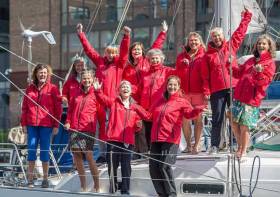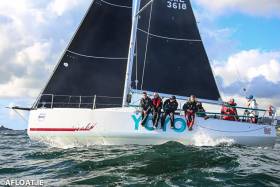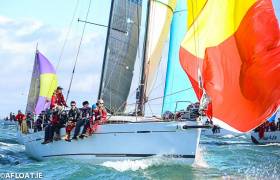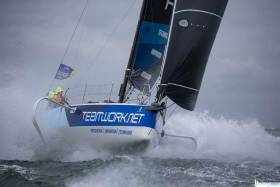Displaying items by tag: Offshore
The Terror of Iceberg Watching on an Offshore Yacht
One of the things I have done in my life is an iceberg watch on the bow of an offshore yacht racing in the Atlantic during the dark hours of night, keeping an eye out for ‘growlers’.
These are small chunks of floating ice that may only be barely visible above the surface of the water, perhaps a foot or two. They could do quite a bit of damage to a yacht. I was on the 83ft NCB Ireland at the time, racing across the Atlantic from Fort Lauderdale to Southampton.
It was the final leg of the 1989/1990 Round the World Whitbread Race, now named the Volvo Race. Because of the variety of weather conditions encountered on that leg, it was a microcosm of the entire race, quite rough and touch and benign at varying times. Somewhere around the cold Labrador Current which flows from the Arctic Ocean south along the coast of Labrador and passes around Newfoundland, continuing south along the east coast of Nova Scotia, a continuation of the West Greenland Current and the Baffin Island Current that meets the warm Gulf Stream at the Grand Banks southeast of Newfoundland, I learned about “iceberg watching” from the NCB crew! It was cold at night, but the warmth of the ‘nav station’ with radar sweeping around seemed to be where “iceberg watching” was done, so I thought that would be ok, only to find my watch was not there but on deck, in the cold, looking for “growlers”. In spring and early summer, when NCB was crossing the Atlantic the Labrador Current transports icebergs from the glaciers of Greenland southwards into the trans-Atlantic shipping lanes.
All that came back to mind this week when I heard Angela Heath, then Angela Farrell from Dun Laoghaire, describe “iceberg watching” as “terrifying”. Indeed, you didn’t know whether to call an alarm or hope that what you saw in the dark was only another wave.
Angela had done “iceberg watching” in much tougher waters in that race – the Southern Ocean – crewing on the all-women’s yacht, Maiden. That 58 ft. British boat was skippered by the legendary Tracy Edwards, then 27 years old and set a new level for women’s participation in sailing. This is the 30th anniversary year of Maiden’s trailblazing achievement which is the subject of a film documentary in the cinemas by Director Alex Holmes. Maiden changed the view of women in world sailing and Angela is still committed to that approach as part of Irish Sailing’s campaign to encourage more participation by women in sailing. Angela helmed the yacht ‘Crazy Horse’ in the Pathfinder Women At The Helm’ regatta in Dun Laoghaire where 200 sailors raced in 61 boats.
She was talking on my radio programme, This Island Nation, to my colleague Justin Maher. I was transfixed listening to her description of sailing on Maiden and “iceberg watching” and how, after having a family, she returned to sailing and how important the ‘Women at the Helm’ programme is.
She concluded her piece with the words about sailing: “Go and do it, it’s so good for you.”
It would be hard to find a better description of the lure, the attraction of our sport. It’s worth listening to.
• Listen to Angela Heath on the Podcast below where she starts by describing what ocean offshore racing is like.
Former Vendée Globe skipper Norbert Sedlacek on his Open 60 is sailing south of Ireland today on his way to the North-West Passage on his journey around the world.
Sedlacek's Open60AAL 'Innovation Yachts' officially crossed the starting line at 07:16:10 p.m. in ideal weather conditions and under the auspices of the World Speed Sailing Record Council to begin a record attempt on the five oceans.
Sedlacek has set a course for the Arctic Ocean, passing the Northwest Passage from east to west and then heading south to round Cape Horn for the first time.
He will then sail around Antarctica in the Southern Ocean and pass Cape Horn a second time before heading north back home to Les Sables d’Olonne.
Innovation Yachts is an Austrian-French shipyard designing and building unique customised racing and cruising yachts. The yard uses new trendsetting fully sustainable and recyclable materials to optimize quality, performance and the protection of the environment during and after construction.
The Open60AAL is the first 60’ which has been built in Les Sables d'Olonne, France. This revolutionary prototype launched in 2018 is made from volcanic rock fibre, balsa wood core and biocompatible epoxy.
The yacht represents the vanguard of a new generation of high-quality boats, very powerful, safe and, it is claimed, ecological.
If this record attempt is successful Norbert Sedlacek will be the first sailor ever who did a singlehanded, nonstop circumnavigation without assistance through all oceans including the Arctic and the Southern Ocean.
This challenge represents approximately 34,000 nautical miles and around 200 days at sea.
J109 'Mojito' Becomes Volvo Dun Laoghaire Regatta Offshore Leader as 'Mermaid' slips in IRC Coastal Contest
The clear record of Seamus Fitzpatrick’s First 50 Mermaid IV (RIYC) in the coastal racing of Volvo Dun Laoghaire Regatta slipped today, taking quite a knock with an 11th while the Pwllheli J/109 (Peter Dunlop) was on top form to take the win, with second going to the J/97 Windjammer (Lindsay Casey & Denis Power, RStGYC), while Nigel Ingrams’ J/109 Jet Stream from Holyhead was third in a developing coastal wind pattern which suited the smaller boats. Mojito is now leading overall across the board with 7 points to the 13 of Mermaid IV and Jet Stream, fourth overall being held by the veteran Mills 30CR Raptor, where the owning RIYC syndicate is listed today as headed by Fintan Cairns – now there’s democracy in action for you, and no mistake.
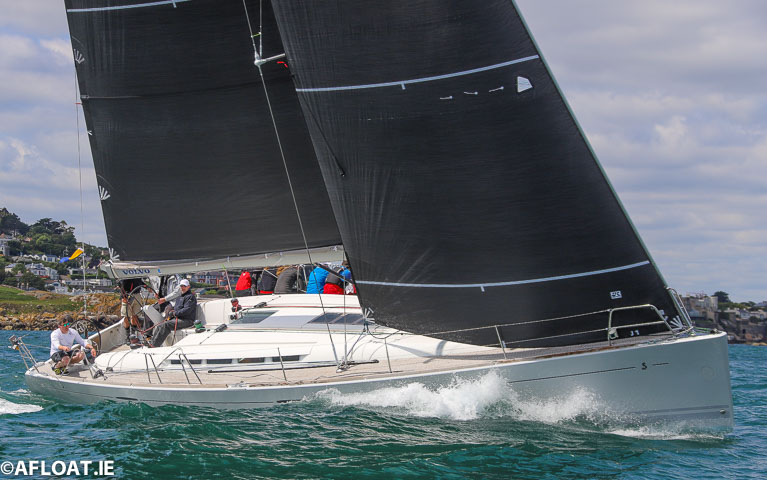 Second overall - First 50, Mermaid (Seamus Fitzpatrick)
Second overall - First 50, Mermaid (Seamus Fitzpatrick)
 Third overall - J109, Jet Stream (Nigel Ingram)
Third overall - J109, Jet Stream (Nigel Ingram)
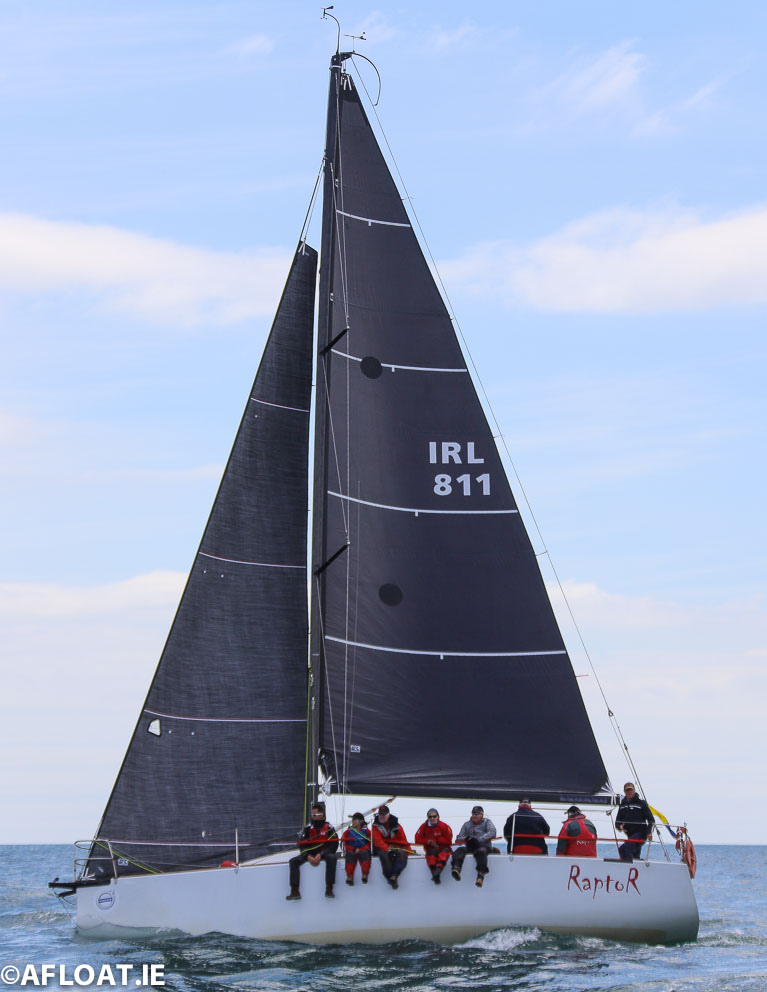 Fourth overall - Mills 30CR, Raptor (Fintan Cairns)
Fourth overall - Mills 30CR, Raptor (Fintan Cairns)
 Fifth overall - J97, Windjammer (Lindsay J Casey & Denis Power)
Fifth overall - J97, Windjammer (Lindsay J Casey & Denis Power)
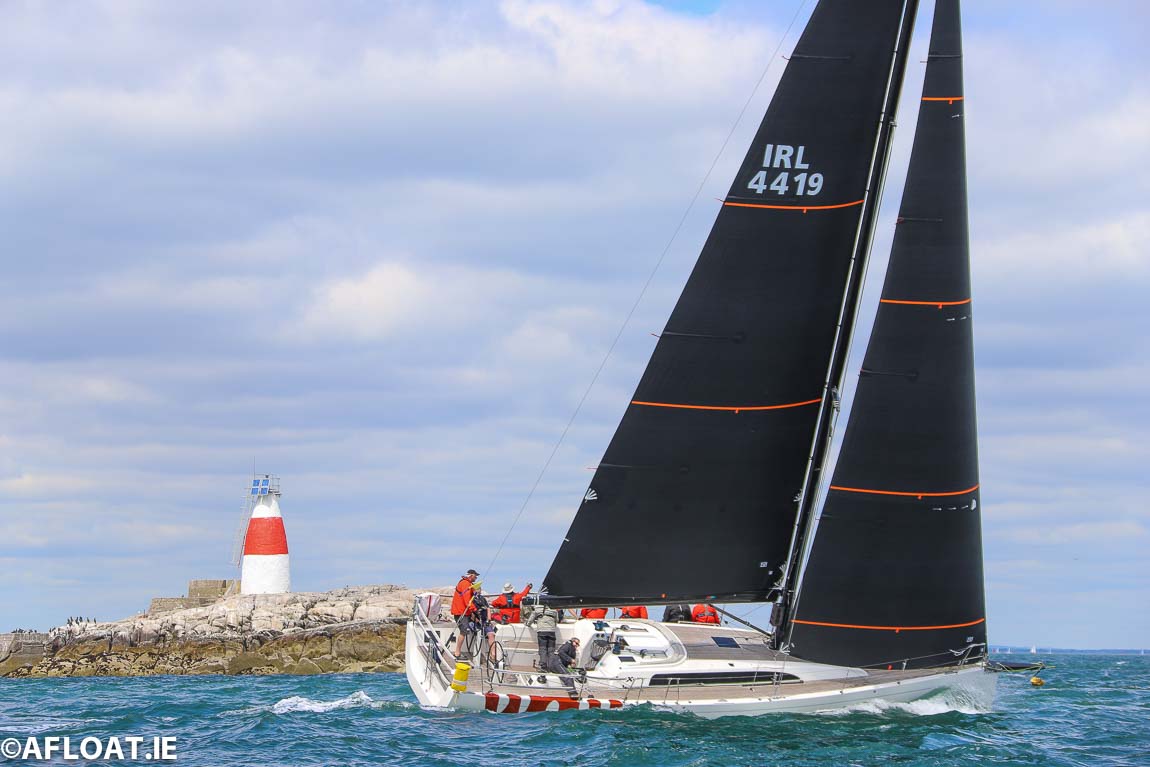 Sixth Overall - XP44, WOW (George Sisk)
Sixth Overall - XP44, WOW (George Sisk)
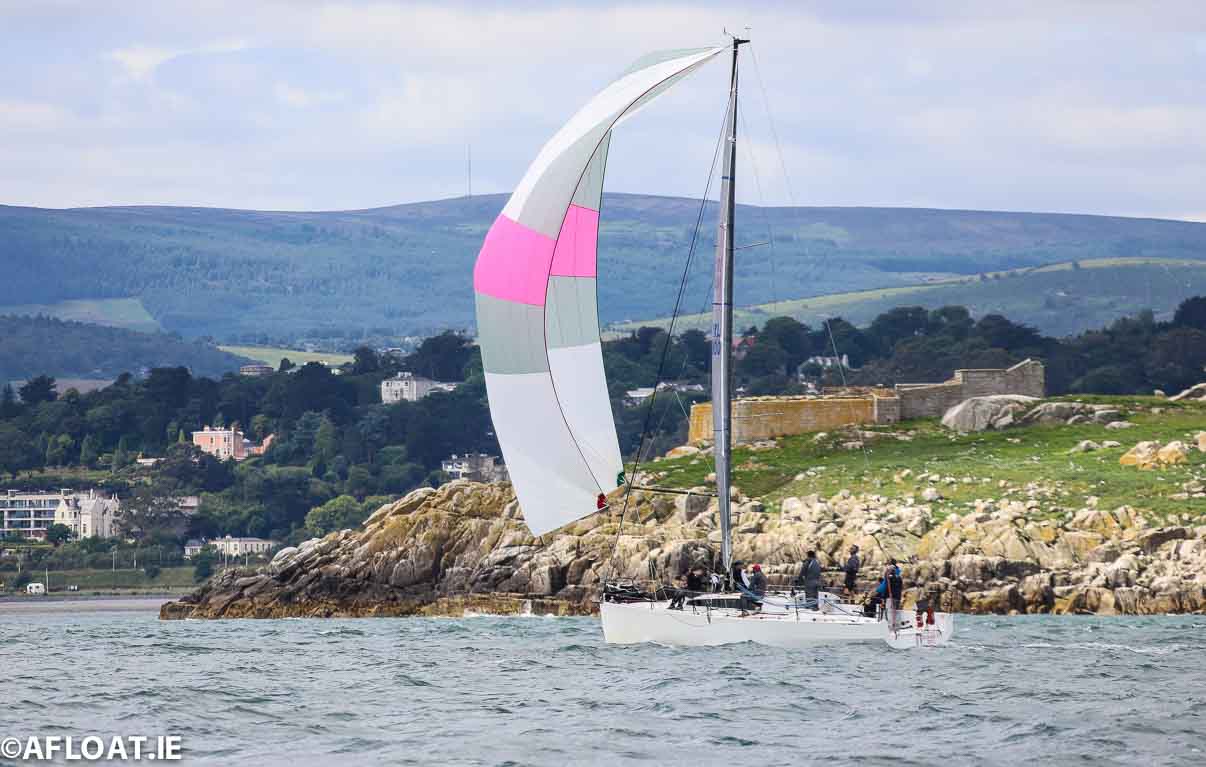 Seventh overall, JPK 10.80 Rockabill VI (Paul O'Higgins)
Seventh overall, JPK 10.80 Rockabill VI (Paul O'Higgins)
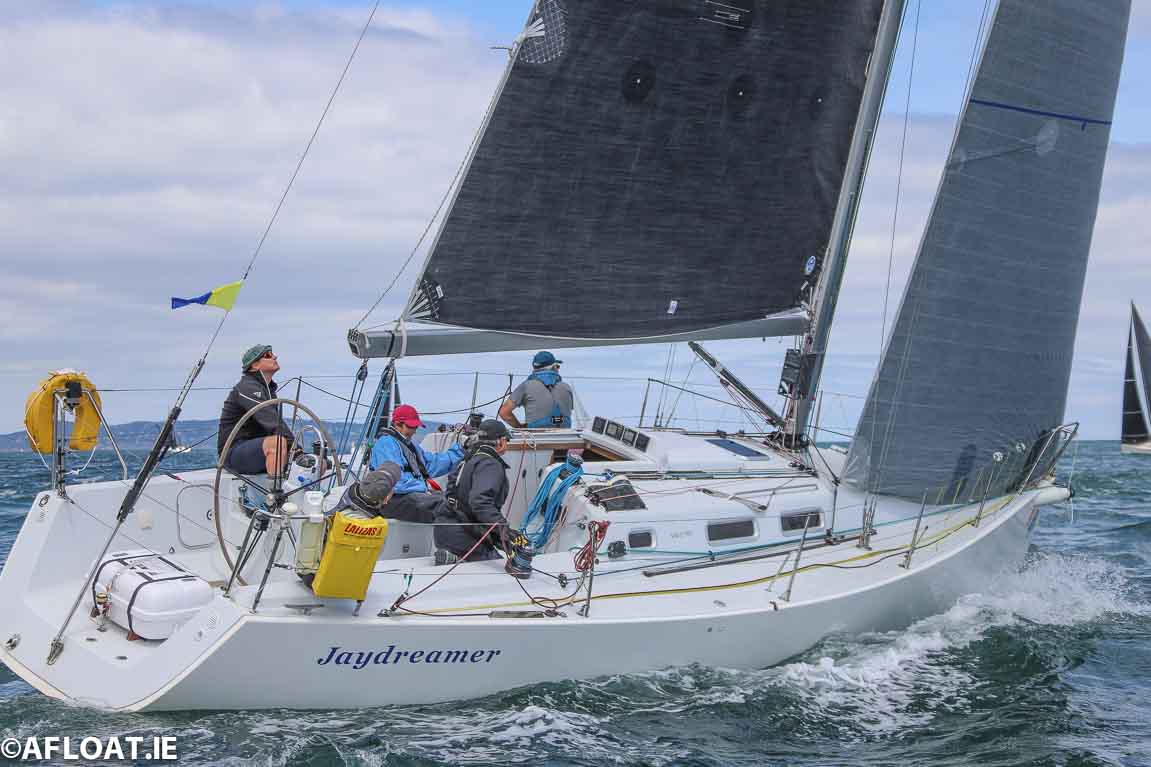 Eighth overall - J109, Jaydreamer (Paul Sutton)
Eighth overall - J109, Jaydreamer (Paul Sutton)
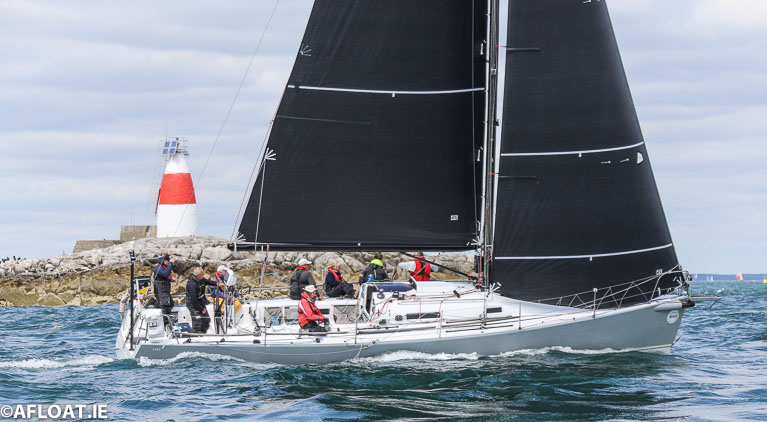 Ninth overall - J125, Jackknife (Andrew Hall)
Ninth overall - J125, Jackknife (Andrew Hall)
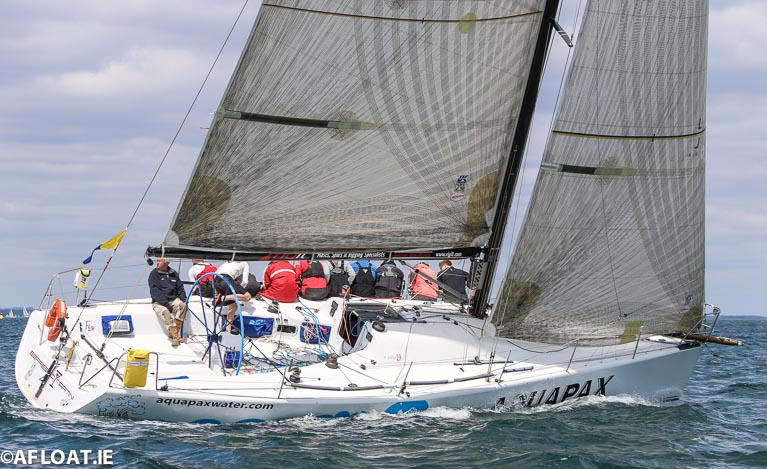 Tenth overall - Farr 40 Expresso Martini, Glyn Sheffield
Tenth overall - Farr 40 Expresso Martini, Glyn Sheffield
The spirit of the Whitbread Round the World Race is back with the announcement of the 2023 'OCEAN GLOBE RACE' (OGR), a retro event starting from a European port on September 10th 2023 celebrating the 50th anniversary of this major milestone in adventure sailing according to organiser Don McIntyre who is also organiser of the Golden Globe Race.
In a world now dominated by professional sailors, foiling yachts and eye-watering budgets. This retro Race reopens once-in-a-lifetime opportunities for ordinary sailors and adventurous yacht owners to follow in the wake of Tabarly, Blake, Van Rietschoten, Blyth, Knox-Johnston and of course Mexican Ramon Carlin, winner of the first Whitbread fully crewed global challenge in 1973 with his production Swan 65 Sayula II
 Sleigh ride in the Southern Ocean, aboard Conny van Rietschoten's 1981/2 winning yacht Flyer. Photo: Julian Fuller/PPL
Sleigh ride in the Southern Ocean, aboard Conny van Rietschoten's 1981/2 winning yacht Flyer. Photo: Julian Fuller/PPL
The Course
Organised by Australian adventurer Don McIntyre along similar lines to the highly successful 2018 Golden Globe Race, which he also founded, the 2023 Ocean Globe Race (OGR) will follow the original Clipper ship sailing route around the Globe, just as the Whitbread Race did in 1973. The course traces the classic four-leg route from Europe to Africa and on to Australasia, then back via a South American port: 27,000 miles and seven months passing under the three great Capes with Cape Horn the prize for most. The final course will be published in late 2020, together with the Final Notice of Race. Cities in the UK, Europe, South Africa, Australia, New Zealand, Argentina, Uruguay and Brazil are being invited to bid to host the ports of call
Retro Rules
Just like the 2018 GGR, this new fully-crewed challenge is equally retro, sailing similar well-proven yachts to those entered in the first Whitbread and with technology limited to what was available to those pioneers back in 1973. That means no high tech materials, computers, satellite systems (including phones and GPS), as well as mobile phones. Navigation will be limited to sextant plots on paper charts, communications via SSB and VHF radios, and music will be played on cassette tapes.
Yacht Types
Entries are limited to ‘approved’ fibreglass production yachts designed prior to 1988, from 47ft (14.32m) to 66ft (20.11m) LOA segregated into two groups:
ADVENTURE 47 to 56ft (14.32-17.06m) & SAYULA 56-66ft (17.07-20.11m) classes. In addition, original entries from the first three Whitbread Races (1973/4, 1977/8 and 1981/2) together with ‘Class surveyed’ production sail training yachts up to 68ft (20.73m) make up a third FLYER Class.
Nautor Swan production yachts that fall within the age/length parameters are currently approved, and similar well-proven production yachts will be considered on application. The fleet is limited to a maximum of 30 yachts and the Race will be sailed under the International Collision Regulations.
Race Concept
Race founder Don McIntyre says: “For the first time in 3 decades, ordinary sailors and yacht owners have an opportunity to experience racing around the world in an affordable, safe and fun way. You don’t need to be an elite sportsman nor require a huge support team. And as far as budgets go, the cost of a campaign need not cost any more than just one of the carbon fibre foils on an IMOCA 60.” (See breakdown budget below).
So many sailors harbour dreams of circling the Globe and racing around Cape Horn. The Ocean Globe Race now makes these ambitions possible once more.“
Best practice safety and security arrangements recognized by maritime agencies around the world have been adopted for the Race and strict minimum crew standards and numbers are specified for each class. Each yacht must also include at least one woman and youth crew aged under 24 at the start of the Race.
McIntyre went on to say that the experience of running the 2018 Golden Globe Race has shown up a strong appetite for simple adventurous sailing around the world and has created a great platform to launch the Ocean Globe Race. “The GGR was a huge success for competitors and attracted a large passionate following around the world. The Race achieved everything we set out to do on a very limited budget. We learned important things about what works and why, and now have a unique formula that provides strong point of difference to any other event.”
The 2023 Ocean Globe Race will be run under the auspices of by the Royal Nomuka Yacht Club in the Kingdom of Tonga and is underwritten by McIntyre Adventure Ltd.
Budgets
What will it cost to enter and campaign a competitive entry in the ORG?
A competitive ADVENTURE CLASS entry with 8-9 crew might start with a good NAUTOR SWAN 55 example on brokerage: 180,000 Euro
Refit using crew labour: 100,000 Euro
Entry fees: 25,000 Euro
Insurance and misc. costs: 20,000 Euro
Total Capital outlay: 325,000 Euro
Your crew should contribute total operating cost around the world, food and maintenance. At the conclusion of the Race sell your SWAN for 200,000 Euros. The experience has cost 125,000 Euros. (You could do it for less with a smaller entry)
*By comparison, just one carbon foil for an IMOCA 60 will set you back between 5-600,000 Euros, so you take on the challenge of the Ocean Globe Race for 25% of a set of foils!
More on the Ocean Globe Site here
The sport of Irish sailing is mourning the loss of Royal Irish Yacht Club (RIYC) member Tom Power (1946-2019), a leading offshore sailing campaigner who died on Saturday after a long illness.
Tributes were led today by his RIYC skipper and friend George Sisk, who spoke about the 'fun times' sailing with Tom on a succession of WOW keelboat campaigns, and prior to that in the 1960s where Tom began his keelboat racing on the Dublin Bay 21, Oola.
Up until last season, when illness prevented Tom going afloat, he was an integral part of George Sisk's crew winning across Ireland at Cork Week, the ICRA National Championships in Kinsale and Volvo Dun Laoghaire Regatta as well as being honoured with ICRA's 2015 Boat of the Year Award.
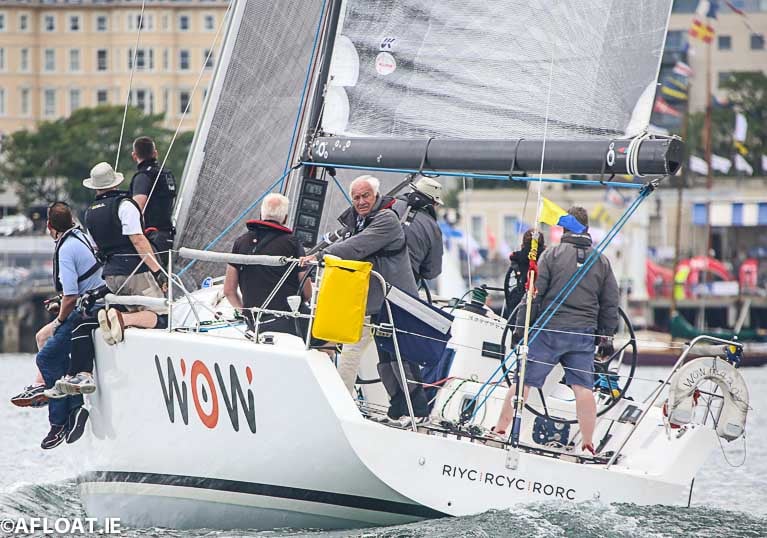 Tom Power (facing aft) onboard WOW in which he enjoyed so much success with friend George Sisk and the Royal Irish Yacht Club crew Photo: Afloat
Tom Power (facing aft) onboard WOW in which he enjoyed so much success with friend George Sisk and the Royal Irish Yacht Club crew Photo: Afloat
Fastnet 1987
Prior to that successful partnership, Tom's international sailing included skippering Ireland's 1985 Admiral's Cup team, competing in the 1986 Sardinia Cup and taking Round Ireland Race line honours victory in the Maxi yacht Maza Drum in the same season.
But undoubtedly the highlight came in 1987, when, as skipper of the Dubois 40 Irish Independent, helmed by Tim Goodbody, the Irish crew won the Fastnet Race overall and became the top scorer for Ireland in the Admiral’s Cup.
It was a significant offshore victory for Ireland that was remembered in 2016 by RORC Commodore Michael Boyd at a special lunch in Tom's honour at the RIYC. More details of that commemoration here.
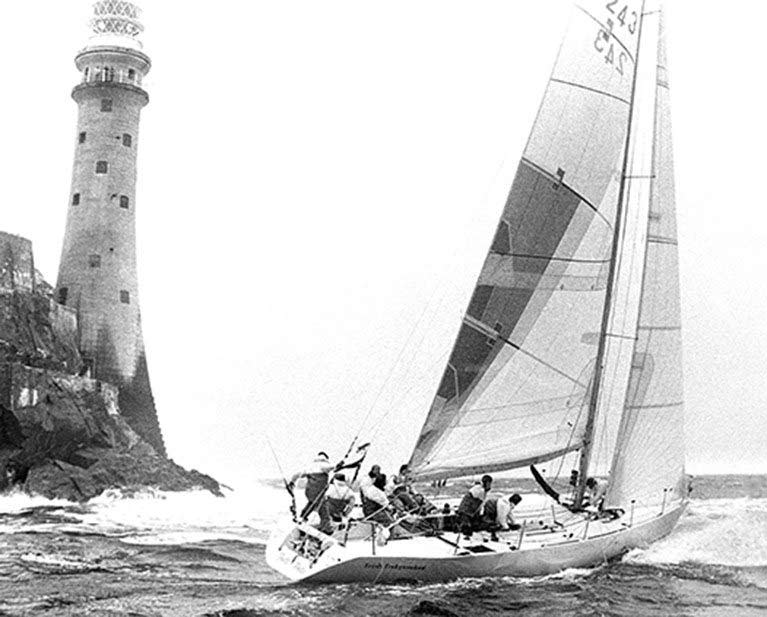 Monday 10th August 1987, and the Dubois 40 Irish Independent arrives at the Fastnet Rock, on her way to winning the Fastnet Race overall, and becoming top scorer for Ireland in the Admiral’s Cup
Monday 10th August 1987, and the Dubois 40 Irish Independent arrives at the Fastnet Rock, on her way to winning the Fastnet Race overall, and becoming top scorer for Ireland in the Admiral’s Cup
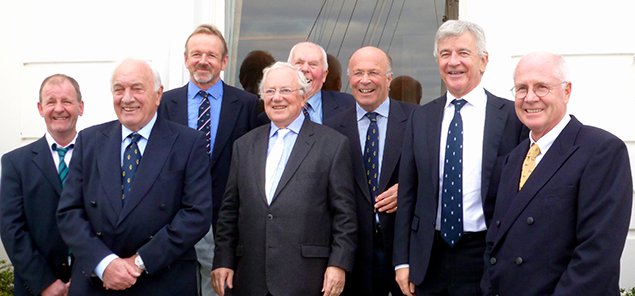
Such passion for Irish sailing inevitably led Tom into the promotion of the sport, and he served on the Irish Yachting Association's (now Irish Sailing) Executive Committee for many seasons.
Tom's keen ability to put winning campaigns together put him at the nexus between commerce and international sailing so that when Ireland's first ever entry into the Whitbread Round the World Race (now The Ocean Race) was launched, Tom was centrally involved.
As a successful businessman in the busy Dublin advertising and marketing scene, Tom used his many contacts and influence to great effect to help Irish sailing, but as many friends and colleagues have pointed out in tribute today, such unsung support was always given "discreetly and very much in the background".
Dun Laoghaire Marina Bid
His interest in marine leisure became a professional one when he teamed up with Dun Laoghaire sailing friends Michael O'Leary and John Bourke to bid against stiff UK competition to win the contract to build and operate the marina in his own home port in 2000. The marina, that had been talked about for 20 years, became a success almost overnight when the trio filled the new facility to a capacity of 850 boats, thereby creating Ireland's largest marina by 2007.
MCIB
In later life, his deep knowledge of marine affairs led to his appointment to the board of the Marine Casualty Investigation Board (MCIB) where he was a trusted advisor.
Tributes
Tom Power was a member of the RIYC for more than 41 years. In his memory, the Club Ensign is being flown at half-mast at the Dun Laoghaire clubhouse and a minute's silence will be observed at the next RIYC Committee meeting.
This Friday at the ICRA Championships, both race committee boats will signal one long hoot to begin one minute's silence onboard all 100 competing boats on Dublin Bay as a further tribute to Tom before the championships begin.
Celebration
A celebration of his life will take place at 12 noon on Wednesday in the Mariners' Church (National Maritime Museum), Haigh Terrace, Dun Laoghaire.
Our condolences are extended to his wife Anne, sons Redmond and Robert, daughter-in-law Valerie and grandsons Redmond and Ruan; immediate family Redmond, Elizabeth, Leonine, Mary, Muriel, Dee, Tony, Jonathan, Kendra and Sian, Callum and Tomas; extended family, relatives and a large circle of his very good friends.
Afloat.ie
RIP.ie Notice is here
Viking Marine ISORA Coastal Race Will Be a 40-Miler
Dun Laoghaire sailors will get a double helping of coastal races this month with Viking Marine's ISORA coastal fixture set for next Saturday, a week after DBSC's own coastal race held on Saturday, results here.
The 40-mile ISORA race will have a start at 0955 and a finish off Dun Laoghaire Pierheads and the course will be announced on Thursday.
It is the second of five races in the Viking Marine Coastal Series from the National Yacht Club.
As Afloat readers will recall, Storm Hannah led to the cancellation of the first coastal of the season and a fortnight later Royal Irish's Paul O'Higgin's took early honours with a win for Rockabill VI in the first offshore of the season into Holyhead.
In Wales, the ISORA fleet in Pwllheli will sail the second of four races in the Global Displays Coastal Series on Saturday that is billed as 'one long bay race'.
Peter Hall's Adélie of the National Yacht Club sailed to another success in the Ruta de la Sal from Denia to Ibiza this Easter.
There were very different conditions this year when the race started at 10 am on Thursday 18th April - grey, chilly, windy (blowing up to 20kts a lot of the race), lumpy confused seas, raining - very much not the champagne conditions of two years ago as Afloat reported here.
Close to 100 boats entered the Denia race, but only 50-odd came to the start, with only 14 finishing the 125-mile race.
Adélie topped her racing class A2 on this occasion, and the Salina class for a second time - coming 4th overall following a seriously exciting final 20 miles on Code 0 and then on a tight spinnaker reach into San Antonio Bay, Ibiza.
ISORA Season Starts in a Fortnight With Coastal Races
ISORA has a full and exciting schedule of races in its 2019 series with a total of 16 races which will include the two Coastal Series, Night Races and, of course, its traditional Offshore Races. The series has been designed to combine with many top-class regattas and the classics races in the Irish Sea catchment area.
The 2019 series starts with the Viking Marine Coastal Races in Ireland and the Global Display Coastal Race in Wales, both on Saturday 27th April.
The coastal race weekend will be followed by the first Offshore race on 4th May from Dun Laoghaire to Holyhead, an important return after the storm disaster there in 2017.
ISORA have again this year teamed up with other races in the Irish Sea and arranged the racing so that deliveries are minimised. This includes the Classics; Dun Laoghaire to Dingle Race (D2D) and the 100th edition of the Liverpool to Douglas Midnight Race.
The Royal Dee Yacht Club, in conjunction with ISORA are running the RDYC Irish Sea Offshore Championship again this year as part of the VDLR. This includes the Race from IOM (Race 9) and the four coastal races in the VDLR.
ISORA has also been working with ICRA to set up a good programme of day offshore races that will be exciting. Quite a lot of effort and planning has been made to offer boats that are more interested in offshore day racing a quality programme of demanding day races. More Information about the ICRA Championships (7th - 9th July) here.
The full ISORA 2019 Schedule of 16 Races is available downloadable below as a pdf.
The miraculous years of 2016 and 2017 provided a magic time in Irish sailing writes W M Nixon. Annalise won her Olympic Silver Medal. Shane McCarthy won the GP14 Worlds. And the most glamorous Round Ireland Race ever staged saw George David’s Rambler 88 and the three MOD 70 trimarans set course records every which way.
Then in the Autumn Enda O’Coineen went off in the Vendee Globe. And our interest in the big race didn’t stop there, as Stewart Hosford through Alex Thomson, and Marcus Hutchinson with his involvement in several boats, gave us an interest in campaigns at every level in this stratospheric peak of sailing ambition.
Came 2017, and Conor Fogerty won his class in the OSTAR, while Tom Dolan continued to make a more significant impact in France with the Mini Transat. Michael Boyd won the RORC Championship overall with the First 44.7 Lisa. And at junior level, there were new stars emerging with reassuring regularity and frequency in several classes at home and internationally.
It was good. In fact, it felt too good to be true. People were dreaming dreams. Even the most grounded people started to dream dreams. And the dream, in this case, was the Vendee Globe 2020. Tens of thousands of miles of everything our planet’s oceans can throw at extreme IMOCA 60s requiring superhuman feats of endurance.
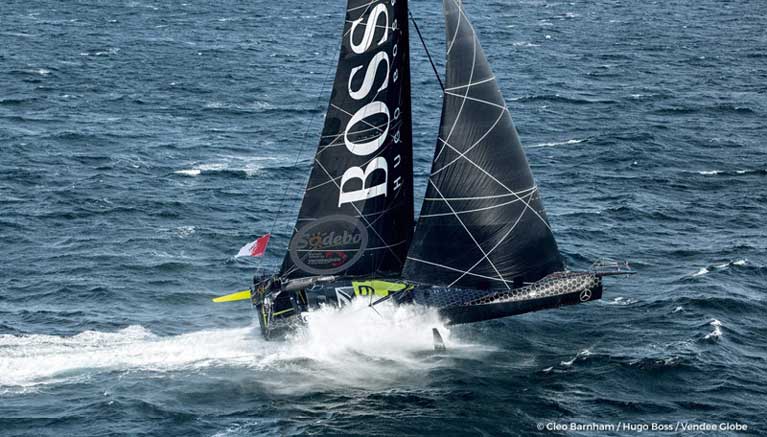 Alex Thomson’s IMOCA 60 Hugo Boss. The skipper is very British, and the sponsors are undoubtedly German, but they need a major French event to show what they can do.
Alex Thomson’s IMOCA 60 Hugo Boss. The skipper is very British, and the sponsors are undoubtedly German, but they need a major French event to show what they can do.
The more demanding the Vendee Globe challenge, the greater the number of Irish sailors who spoke of their interest in being there on the starting line next time round, on 8th November 2020. At various stages proven sailors as diverse as Conor Fogerty, Sean McCarter, Nin O’Leary, Joan Mulloy and Tom Dolan have been testing the sometimes distinctly tepid waters of potential Irish and international sponsorship support for the 2020 race.
Of course, we have to recognise that the difference between an expression of interest and the announcement of a full-blown campaign is a very wide gulf, and if everything is going the right way, there is much that can happen in the year or so that is arguably still available.
Yet here we are now, with eight and perhaps even nine totally new IMOCA 60 boats well under construction in Europe with the 2020 race less than 19 months away, and not one of any of the entries - new or second-hand - seems to be Irish. This despite the fact that there are now so many IMOCA 60s of varying vintages around that the Rolex Fastnet Race of 3rd August 2019 has an entry of 29 of these remarkable machines. And the fact that one of them, Mike Golding’s boat the former Gamesa, has Joan Mulloy in the personnel lineup certainly provides a line of possibility.
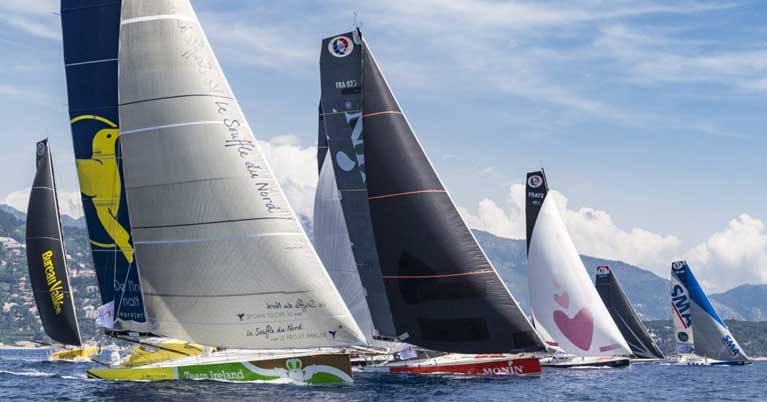 There’s a lot of them about……Imoca 60s at Monaco in June 2018, with Souffle du Nord/Team Ireland in foreground racing to success for Thomas Ruyant and Joan Mulloy. In the 2016 Vendee Globe, Ruyant’s Souffle was forced into port in New Zealand following hull damage from a submerged object, and after repairs was sailed back to France by Enda O Coineen
There’s a lot of them about……Imoca 60s at Monaco in June 2018, with Souffle du Nord/Team Ireland in foreground racing to success for Thomas Ruyant and Joan Mulloy. In the 2016 Vendee Globe, Ruyant’s Souffle was forced into port in New Zealand following hull damage from a submerged object, and after repairs was sailed back to France by Enda O Coineen
But the Fastnet Race, while challenging, is more of a display case for the highly-specialised offwind-oriented IMOCA 60s than a proper contest. For the Fastnet has a very manageable timespan as opposed to the resources-devouring full-on Vendee Globe campaign, which requires major expenditure decisions from sponsors. And in today’s uncertain economic and political times, many big business decisions are being put on hold.
However, part of the big-time sponsorship process involves long hours of detailed presentations in powerful board-rooms, in an atmosphere about as remote as possible from the realities of racing the Great Southern Ocean. Such serious negotiations could be going on in total privacy even as we speak. In fact, as recent Irish experience has shown, premature announcements of quests for sponsorship can be seriously counter-productive. And “serious” is scarcely the word for it – after all, for a top end new boat, we’re talking of a basic budget of €2.5 to €3 million, effectively for three years although there’s value added in that, post race, the boats are now eligible to be modified for participation in 2021’s Ocean Race.
So speculation on permutations of fate continues to be rife. But for now, we’ll stick to the known knowns. For we do of course have Stewart Hosford of Cork and his team beavering away in a building unit near Southampton on the new Hugo Boss for Alex Thomson. And in Lorient in Brittany, the many talents of Marcus Hutchinson of Kinsale and formerly Howth are being deployed on another IMOCA 60, this time for the formidably-focused and proven talent of Thomas Ruyant of Dunkerque.
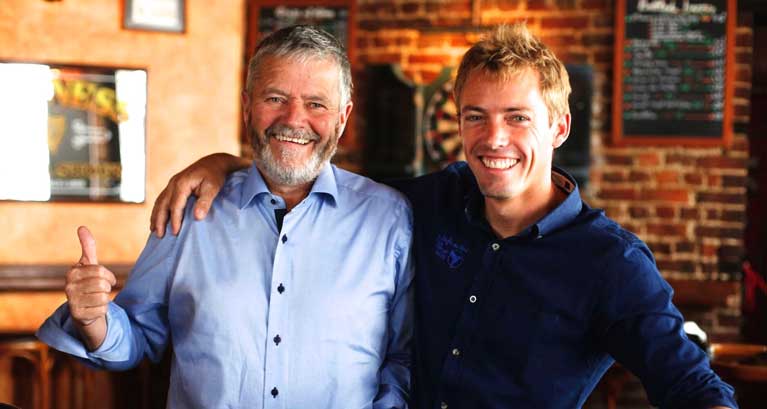 Enda O’Coineen and Thomas Ruyant
Enda O’Coineen and Thomas Ruyant
But Hosford and Hutchinson have been in the inside track for quite a while. As for other names, Joan Mulloy and Tom Dolan are having mixed fortunes in the Sardinha Cup, the opening salvo of the Figaro Solo season, which will bring the fleet to Kinsale in early June as a stopover in La Solitaire URGO Figaro 2019 itself, the Golden Jubilee.
Aboard with Dolan for the Sardinha is Damian Foxall, who is head and shoulders above all other Irish sailors in the success of his career which emerged from the French professional sailing structure. Yet Foxall turns 50 next year, and while the 73-year-old Jean-Luc van den Heede proved with his victory in the Golden Globe Golden Jubilee in January that age is not necessarily a matter of chronology, Foxall is showing involvement in other areas such as the environment which may become his dominant interest.
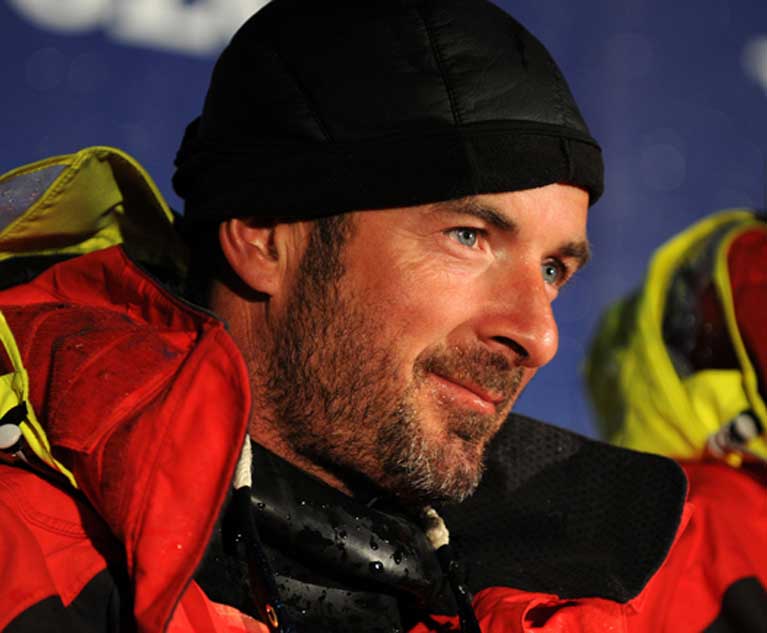 Damian Foxall, Ireland’s mega-race superstar
Damian Foxall, Ireland’s mega-race superstar
But for now, with the clock ticking remorselessly towards 8th November 2020, the likelihood of an Irish skipper in charge of a truly competitive IMOCA 60 seems increasingly remote. Yet as the underlying sense of excitement builds up, there are always new talents emerging over the horizon to whom the Vendee Globe and other major events call. So what would we say to some young, ambitious and talented Irish sailor who is thinking of moving into this unforgiving yet sometimes highly rewarding big-time offshore scene?
Basically, you’ve to face up to the French reality. France holds a unique position in world sailing, with a distinctive strength and status in the sport which often enables it to dictate the international agenda. And when world maritime attention focuses – as it does with increasing frequency – on a selection of major French events, they somehow manage to seem accessible, yet in their ultimate manifestations are clearly the sailing of superstars.
For the most ambitious young Irish sailors, this French hegemony presents a dilemma, and it’s not for everyone. Rather than being sucked into it, you can, of course, avoid the French power-pull, and instead take the standard Irish international performance sailing route, which is based around World Sailing’s global programme, with the glitter of the Olympics inevitably at its core. Theoretically, you are supported along the way, but resources often seem scarce, and the close public attention can be stressful in itself
On the other hand, you can strike out with any outstanding ability in the less structured Anglo-Saxon word of major events, in which wealthy individual owners are always on the lookout for special talent – three notable successes in this category are skipper/helmsmen Harold Cudmore and Gordon Maguire, and navigator Ian Moore, of whom it has been said that having him on a Transatlantic race is as good as narrowing the ocean by at least 150 miles.
 The 212ft Ron Holland-designed superyacht Perseus, skippered to success by Nin O’Leary
The 212ft Ron Holland-designed superyacht Perseus, skippered to success by Nin O’Leary
This line of approach may then overlap into high profile happenings like The Ocean Race - formerly the Volvo – while in a different direction, the growth of very private superyacht regattas means that an Irish sailing star who has shown he or she can make the glossy giants sail well is going to be very much in demand, but discretion is expected. Nevertheless, we did manage to find out that in one example, Nin O’Leary was called in to get the best performance out of the 212ft Ron Holland-designed sloop Perseus (that really is 212 feet, and she really does have only one mast), and he did the business to leave an owner very happy indeed.
Equally complex in its way is the America’s Cup where – despite continuous reassurances of its relevance to everyday sailing and the benefits of the trickle-down effect of the technology it develops – the feeling is inescapable that you’re in a parallel universe rather than an integral part of the world sailing scene.
But in France, because of the corporate nature of the social structures, and the way that harbour towns, regions and national utilities are expected to promote themselves with commercial vigour, there’s a unique maritime setup in which top-end sailing is very much part of national life.
2024 Sailing Olympics
For those who would wish to make their way in it as a career, it is by no means a bed of roses. It is tough – very tough. But nevertheless it most definitely is there, it provides a recognizable path of progress, and a few Irish sailors – a very few, admittedly – have found fulfilment through the French system.
 Focal point of world sailing. The Paris Boat Show, December 2018, and Joan Mulloy, Irish Sailing President Jack Roy, and Tom Dolan are in town for the draw for the new Figaro 3s for the 2019 season. Photo: Rosemary Roy
Focal point of world sailing. The Paris Boat Show, December 2018, and Joan Mulloy, Irish Sailing President Jack Roy, and Tom Dolan are in town for the draw for the new Figaro 3s for the 2019 season. Photo: Rosemary Roy
It’s not a potential career path which will lessen any time soon, for France is going to host the 2024 Olympics. And as it was a Frenchman, Baron Pierre de Coubertin, who is generally credited with re-inventing the ancient Greek games in the beginnings of their modern form in 1896, the French can have a somewhat proprietorial attitude towards the Olympics. This will particularly manifest itself in the sailing, for boat change is always in the air with the long four-year Olympic cycle, and when possible, hosting nations do everything to promote boats from their own designers and builders for the accolade of Olympic selection.
It’s a mixed blessing, for at the moment only the venerable Laser manages to be both an Olympic class and a popular boat at grass roots level. But nevertheless we’ve already had the report in Afloat on testing for a new women’s single-hander, and while the tests may have taken place in Valencia in Spain, you couldn’t help but notice that a French boat was very much in evidence.
This approach is much more apparent in the intriguing new development with introducing offshore racing as an Olympic discipline, the proposal from the World Sailing Equipment Committee being that the new boat - which is not to be a foiler – is to be sailed by a woman and a man.
Currently, the new boat which has been grabbing the headlines is the foiling Figaro 3, whose current debut with the Sardinha Cup has been sending out very mixed messages. The boat has tremendous potential, but the excessive occurrence of rig failures this past week shows there is much work to be done before the fleet launches into the Golden Jubilee Figaro itself in just six weeks time.
 Marcus Hutchinson recently presented proposals for an adapted version of the Figaro 3 as an Olympic offshore training boat
Marcus Hutchinson recently presented proposals for an adapted version of the Figaro 3 as an Olympic offshore training boat
Meanwhile, others have been thinking beyond this current Figaro, beyond the Fastnet, beyond the Vendee Globe, and on to the possibilities which the introduction of an offshore racing class in the Sailing Olympics at Marseille in 2024 will offer, and this month in France, Marcus Hutchinson presented a discussion document on realities and possibilities for developing Olympic two-handed mixed gender offshore teams to the Figaro Beneteau 3 Academy.
It’s high-powered stuff, and you can reach your own conclusions and queries from studying it in its raw form. But for the inevitable and instant “How much?” query, the answer is that bringing a qualified crew to the required offshore racing level for realistic participation in the 2024 Olympics, you’ll be looking at a basic budget of €800,000 a year.
And as for the suggestion that there might usefully be a de-foiled version of the Figaro 3, may that’s not such a bad idea. In its current form, the FB3 has no less than five appendages sticking out under the bull. Just ask Tom Dolan and Damian Foxall what happens when you get that particular bag of tricks in among some abandoned fishing gear…….
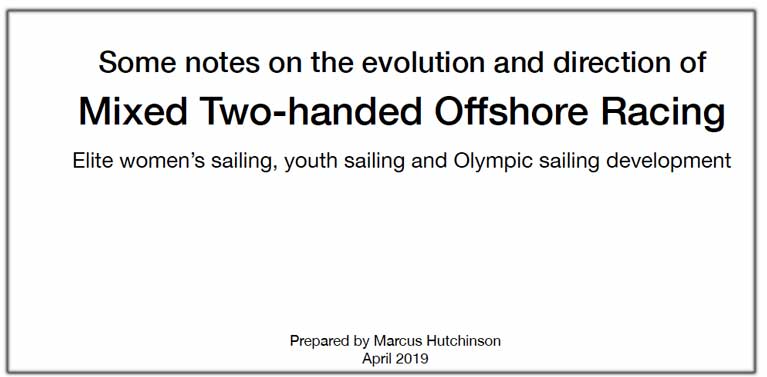 Marcus Hutchinson's presentation is available to download below in PDF format
Marcus Hutchinson's presentation is available to download below in PDF format
World Sailing has announced that the L30, a 30-foot one design keelboat, has been selected as the supplied equipment for World Sailing's Offshore World Championship from 2020.
First tested in November 2015, the L30 boat concept was drawn up by Olympic medallist and Volvo Ocean Race competitor Rodion Luka. Andrej Justin, designer of RC44, brought the L30 to life, combining all round offshore performance, ease of logistics, a strict one-design model and global, ready to race, affordability.
The Championship will be a two-person mixed competition (one man, one woman) between nations, featuring 20 boats. The boats will be chartered by the national teams and allocated to sailors one week ahead of the Championship via a boat draw before sailors have time to test and prepare for the challenge that lays ahead of them. Held alongside the Rolex Middle Sea Race, the competitors may be required to sail the full course or a reduced course depending on the weather conditions.
The Offshore World Championship will engage countries new to double-handed offshore sailing by providing a full fleet of L30s that are ready to use at the event venue. L30s will also be available to charter in Europe for training from the summer of 2019.
Kim Andersen, President of World Sailing, commented, "The L30 Class share our ambition to grow double-handed offshore sailing globally. The boat is well designed to cater for the demands of offshore sailing and will provide the sailors competing in Malta next year with a stern challenge.
"The boat has been trialled by some of the world's leading sailors including Charles Caudrelier (FRA), Ian Walker (GBR) and Abby Ehler (GBR). Their feedback has been crucial in the development and progression of the boat following the first concept.
Rodion Luka, CEO of L30 One Design, said, "Our team is proud to be a technical partner of World Sailing's and to support the Offshore World Championship. I have no doubt that this event will bring our sport to a new level, engaging a wider audience and opening new horizons for offshore sailors around the globe.
The 2020 Offshore Sailing World Championship will be organised in collaboration with the Royal Malta Yacht Club and World Sailing.
Originally earmarked to be held in 2019, World Sailing postponed the hosting to 2020 to allow a full qualification system to be developed, allowing ample opportunity for Member National Authorities to qualify and prepare for the event.
More on the L30 here





























